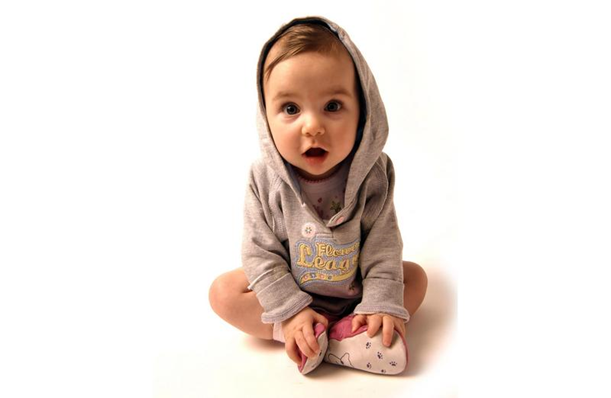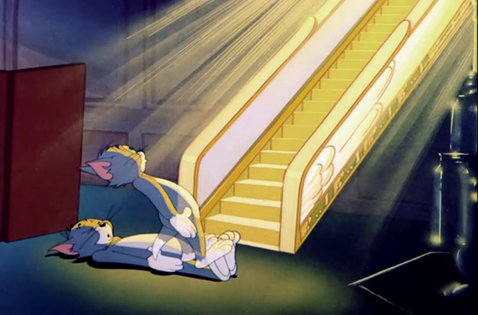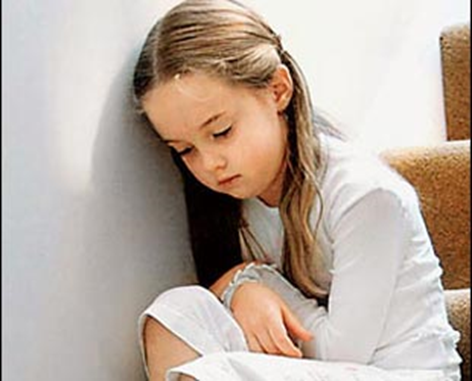ATTITUDES TO DEATH ACCORDING TO LIFESPAN DEVELOPMENT PERIODS
Death is defined as the definitive end of a living thing. It also means extinction, disappearance (TDK, 2015). Attitudes about death are important to make life meaningful. Although the perception of death by people varies from person to person, death means nothing for some and an eternal life for others (Tanhan & Arı, 2006). Accepting death as a part of life also provides a more qualified perception of life (Karakuş, Öztürk, & Okay, 2012).
One of the factors affecting attitudes towards death is developmental periods. Individuals' perceptions of death vary in different age periods.
Infancy (birth to 18-24 months)
According to Bowlby (1980), the concept of death emerges around 17 months. In this period, the lost object can be kept in memory. Although death means the absence of an existing person, it can cause reactions such as sadness, protest, and hopelessness in the baby (as cited in Tahta, Tahta & Dernek, 2015; Erdoğan and Karaman, 2008). The concept of death in infancy is felt by the infant, but not directly perceived. Instead, the baby is affected by the loss in direct proportion to the response of the caregiver (Yıldız, 2010).
 First Childhood-Pre-School Period (from 2 to 5-6 years old)
First Childhood-Pre-School Period (from 2 to 5-6 years old)
Although children cannot understand death in the first childhood period, there is no definite concept of death for this period (Köylü, 2004). Since preschool children are in the preoperational stage, they have an egocentric and magical mindset. At the same time, the lack of development of the concept of continuity in this period prevents them from understanding that death is an irreversible event. Death is a permanent concept, but it can be perceived as a temporary event in this period (Sezer & Saya, 2009).
Anyone who disappears during this period is considered dead. The deceased is also imagined to be living elsewhere in a different way. In this variant, life can be invisible in the graveyard or above the clouds. Children believe that the dead feed and grow in these places. In addition, according to their thoughts, the dead are aware of what is happening on earth. At the same time, children are aware that this life is different from normal human life. Some children, on the other hand, limit the disappearance to the state of being asleep. They also think that those who want or deserve death are dead (cited in Sezer & Saya, 2009; Ekşi, 1999).
Language development is very important for learning attitudes. Language development is largely completed in the preschool period, so children can understand this if parents explain to children about the loss. Children who cannot express their emotions experience problems such as guilt, aggression, sleep and eating disorders (Yıldız, 2010).
Middle Childhood-School Age (from 6 to 11 years old)
In the school age period, the child is in the concrete operational stage between the preoperational stage and abstract thinking. A child in this period has learned the concept of time (past, present, future). The development of the concept of time helps him/her to understand that the concept of death is a continuous phenomenon. At the same time, children up to the age of 9 think about death in a concrete way and believe that it is caused by superhuman beings such as spirits, skeletons, ghosts, creatures, and they may develop fears against these beings. This can also cause children to have nightmares about death. In addition to realizing that dead people cannot be revived, they also experience the guilt of not being able to prevent death due to magical thoughts (Yılmaz, 2012)


At the age of 8-9, death is still a tangible event and the physical aspect of death is emphasized. They understand that the deceased person's bodily activities have stopped; realizes that he cannot engage in activities such as talking, breathing, eating, and moving. It is understood from the age of 9 that death is inevitable and that it will happen to everyone (cited in Tahta, Tahta ve Association, 2015, Meb-Unicef, 2001). After the age of nine, the child clearly encounters death anxiety. The thought that death is for everyone and that it will take our parents away from us can cause children to be afraid and have nightmares (Yılmaz, 2012). This sadness can occur in different ways such as crying, acting aggressively, bed-wetting, imitating the behavior of the deceased (as cited in Yıldız, 2010; Sara, 1993).
Adolescence Period (from 10-12 years old to 18-21 years old)
The perspective on death changes during adolescence with the increase in mental developments and learning. Abstract thinking begins to develop during adolescence. Adolescents can think symbolically and form theories, as well as analyze their own thoughts. These developments affect the perspectives of adolescents towards death and abstract the concept of death. Adolescents question the meaning and existence of life, they try to bring philosophical and religious explanations to death, although they understand that death is uncertain. (cited in Sezer and Saya 2009; Gudas, Koocher and Wypij, 1991).
At the same time, the egocentric mindset in adolescence causes them to think that death is far away and will not come to them (cited in S.Sezer, P.Saya; Elkind 1967). Some adolescents, on the other hand, show an interest in death by thinking about their own death. In the event of the loss of one of the adolescent's relatives, anger, sadness, and denial reactions may emerge and suicidal ideation may occur (as cited in Sezer & Saya,2009;Erden, 2000).
 Early Adulthood (early 20s to 30s), Middle-Adulthood (40 to 60 years), and Late Adulthood (60s and beyond)
Early Adulthood (early 20s to 30s), Middle-Adulthood (40 to 60 years), and Late Adulthood (60s and beyond)
While studies in the literature show that there is a linear relationship between age and death anxiety, some studies show that there is no relationship. In general, research findings show that death worries the individual less due to the perception of "near reality" in late adulthood, death anxiety decreases in early adulthood due to increased responsibilities and interests in life, and when the characteristics of adolescence period are taken into account, death anxiety of adolescents is higher than other periods. (Ayten, 2009).
In early adulthood, individuals are more interested in activities such as marriage, obtaining a job and finding a job, and therefore they are thought to be less interested in death. It is also known that individuals face death and turn to sports with high adrenaline against death (Yıldız, 2014).
In middle adulthood, with the decrease in physical competences and the emergence of diseases, more thinking about death and acceptance of death are observed (cited in Seyhan, 2015; Cüceloğlu, 1991).
In late adulthood, however, physical and cognitive decline begins to be felt more. Individuals witness the loss of the people they loved one more frequently and think that they are closer to their own death. Therefore, it is thought that the individual prepares himself/herself for death and thinks about death more than middle adulthood.
While the behaviors of participating in social environments and making friends are observed in young adults, the behavior of turning to religious issues is more common in older adults (Öztürk, 2010).
REFERENCES
Ayten, A. (2009). Üniversite öğrencilerinde ölüm kaygısı: Türk ve Ürdünlü öğrenciler üzerine karşılaştırmalı bir araştırma.
Dinbilimleri Akademik Araştırma Dergisi,
9(1), 85-108.
Duman, N. S. (2014). Çocuklarda Kanser, Ölüm Kavramı ve Yas.
Acta Oncologia Turcica.47(2), 26-30.
Karakuş, G., Öztürk, Z., ve Tamam, L. (2012). Ölüm ve ölüm kaygısı.
Arşiv Kaynak Tarama Dergisi,
21(1), 42-79.
Köylü, M. (2004) Ölüm Olayının Çocuklar Üzerine Etkisi ve ‘Ölüm Eğitimi’,
Ondokuz Mayıs Üniversitesi İlahiyat Fakültesi Dergisi, 17(2), 95-119.
Öztürk, Z. K. (2010). Yaşlı Bireylerde ölüm kaygısı. (Uzmanlık tezi), Çukurova Üniversitesi Tıp Fakültesi Enstitüsü, Adana.
Sezer, S., & Saya, P. (2009). Gelişimsel açıdan ölüm kavramı.
Dicle Üniversitesi Ziya Gökalp Eğitim Fakültesi Dergisi, 13, 151-165
.
Seyhan, B. Y. (2015). Ölüm kaygısı ve dua tutumu üzerine bir araştırma.
Trukish Studies. 10(2). 863-862Tahta, F., Tahta, K., & Dernek, S. (2015). Çocukların Yakınlarının Ölüm Kavramlarını Algılama Üzerine Kurdukları Sistemler ve Oyunlar
. Hacettepe University Faculty of Health Sciences Journal, 1.
Tanhan, F. ve Arı F. (2006). Üniversite öğrencilerinin ölüme verdikleri anlam ve öğrenim gördükleri program açısından ölüm kaygısı düzeyleri.
Yüzüncü Yıl Üniversitesi, Eğitim Fakültesi Dergisi. 3(2). 34-43.
Yıldız, A. (2004) “ Çocuk, ölüm ve kayıp”,
Balıkesir Üniversitesi Sosyal Bilimler Dergisi, 11, 125-144
Yılmaz, S. (2012). 8-13 yaş çocuklarının bilişsel gelişiminde “ölüm kavramı”.
C.Ü. İlahiyat Fakültesi Dergisi, 16(1), 9-42.





